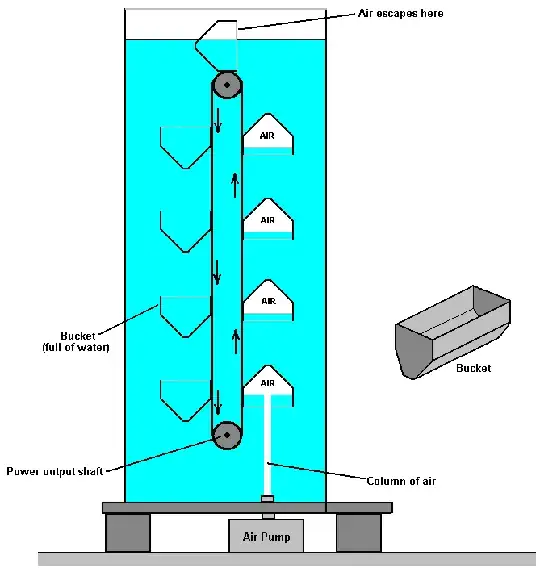Quite recently the company Rosch has developed a new kind of power plant that supposedly utilizes the buoyancy effect to generate electricity. The apparatus consists of a vertical conveyor belt with buckets attached to it. The whole construct sits inside a cylinder of water. Through a compressor, air is blown into the upturned buckets which decreases their density and allows them to rise. At the top the air is released and the buckets go back to the bottom of the cylinder. This turns the conveyor belt and a generator that produces electricity. A schematic is shown below.
Now this technology is very controversial and many claim that it is a fraud but the company has had a test facility running for quite a while and generated enough electricity to power both the compressor and a number of household appliances.
I have spent a lot of time trying to figure out problems with the system because it seems that it does not conserve energy. Sure it uses gravity but still there is no loss of energy elsewhere, like the loss of potential energy in a hydroelectric facility for example. I simply do not understand where the energy is coming from. Would this not count as a perpetual motion machine?
(If this is more related to engineering feel free to migrate the question)
